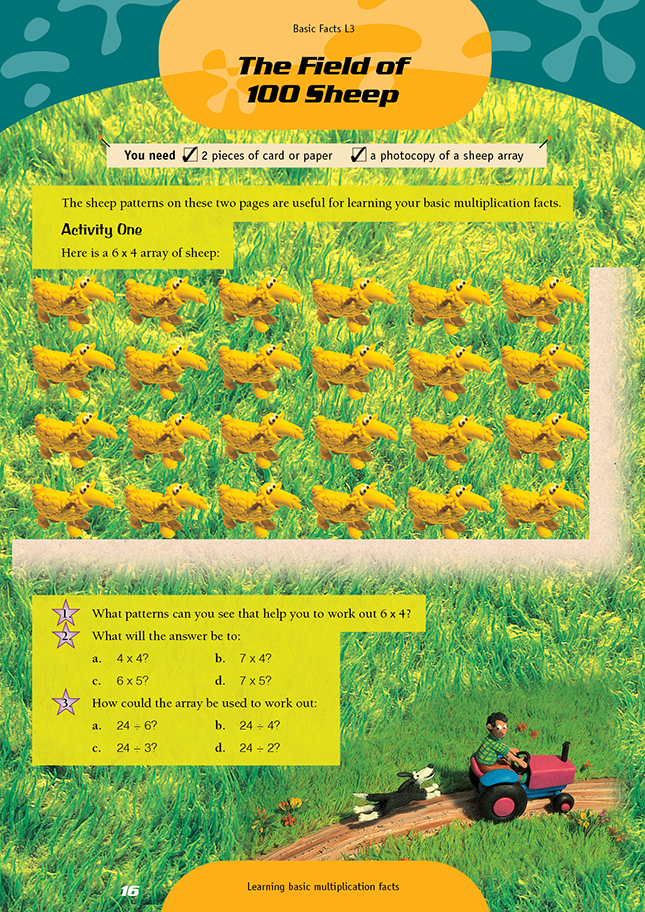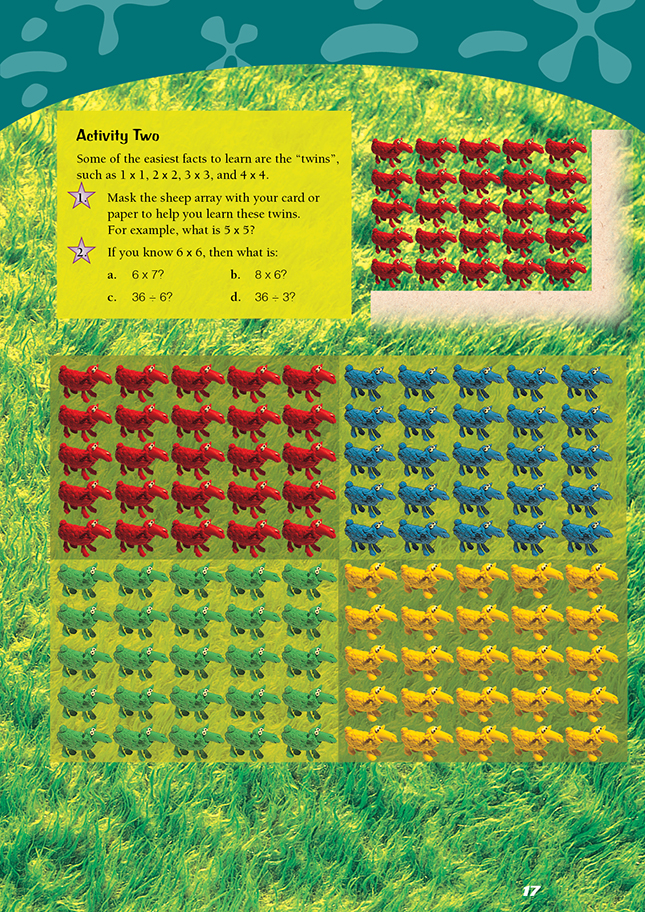This is a level 3 number activity from the Figure It Out series. It relates to Stage 6 of the Number Framework.
Click on the image to enlarge it. Click again to close. Download PDF (377 KB)
use arrays tosolve multiplication facts
2 pieces of card or paper
FIO, Level 3, Basic Facts, The Field of 100 Sheep, pages 16-17
photocopy of a sheet array
Activity One
This activity provides students with an array model to help them visualise multiplication. This is a similar approach to the choco-blocks model on page 10 of the students’ booklet. Students are encouraged to make links with facts that they already know in order to find the product for a new fact. For example, masking half the 6 x 4 array gives students the opportunity to view it as a 3 x 4 array doubled.
A masking card can be used to encourage skip counting. Uncovering each of the rows in turn gives 6, 12, 18, and 24, which are the multiples of six. Uncovering each of the columns in turn gives 4, 8, 12, 16, 20, and 24, which are the multiples of four.
For question 3, students can use the array in reverse to model division. They slide the card either horizontally or vertically to find the quotient for a or b. (24 ÷ 3 and 24 ÷ 2 are not easily shown by sliding the card.) Encourage students to link their knowledge of basic multiplication facts to division.
Activity Two
This activity encourages students to learn the “twins” and then use this knowledge to learn other multiplication facts.
Answers to Activities
Activity One
1. Answers will vary. Known facts can be built on to obtain 6 x 4 or 4 x 6, for example, (5 x 4) + 4 or (3 x 3) + (3 x 3) + 6.
2. a. 16
b. 28
c. 30
d. 35
3. a. Group the sheep in clusters of 6. Count the clusters (4).
b. Group the sheep in clusters of 4. Count the clusters (6).
c. Group the sheep in clusters of 3. Count the clusters (8).
d. Group the sheep in clusters of 2. Count the clusters (12).
Activity Two
1. 25
2. a. 42
b. 48
c. 6
d. 12

